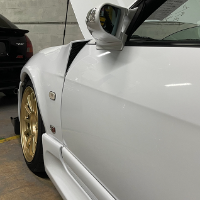Rb26 Compression Test Results
Announcements
-
Similar Content
-
Latest Posts
-
No. BSP lost to the cultural/technical imperialism of living next to Trumpistan. Face it, Robertson screws were better and still pretty much lost out to the yank stuff. The Europeans hate the Brits and they don't use NPT. NPT is just as "imperial" as BSP is, being based on those useless inch thingos. Just done differently.
-
By TurboTapin · Posted
I live in Quebec. Our license plate slogan is "Je me souviens" Translated is "We will remember" as a reminder to when England conquered us and that we must never forget what they did. Long story short, BSP is unheard of here due to being an English design. I'm surprised our nazi anti english government office the OQLF hasn't kicked in my door yet just talking about it, yet alone imperial anything. -
Thanks for that! I did a quick Google search looked up some of hydaulic stores and didn't see it listed on the website, I'll give them a ring. Also found out later that I can buy 2 oem bleeder bolts for 10 bux and come with the washer which I might do so I don't waste the money it costs in petrol to find 2 washers (already did that lol). The old copper washes look in good nick, I drove it after taking it off and putting it back on and didn't see any Part number here for reference if anyone needs: 14053-42L0A
-
Piggaz had one and broke it at 470kw
-









Recommended Posts
Create an account or sign in to comment
You need to be a member in order to leave a comment
Create an account
Sign up for a new account in our community. It's easy!
Register a new accountSign in
Already have an account? Sign in here.
Sign In Now